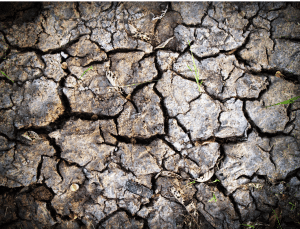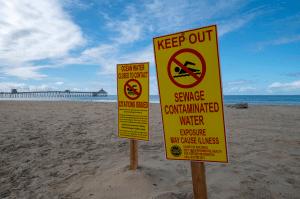Australia has an estimated 160,000 contaminated sites. According to the Global Centre for Environmental Remediation, over $2billion a year is spent cleaning up contaminated land and water.
Australian States and Territories are individually responsible for regulating contaminated land. However, the Australian Government sets a national standard for a consistent assessment of contaminated sites.
Land redevelopment or approval conditions are common triggers for site remediation. Knowledge of previous land use assists in understanding the potential contaminants such as metals, hydrocarbons, pesticides, and solvents. Soil contaminants may contribute to decades of emissions to air, surface water, or groundwater.

Metals can remain dormant in the soil for years and are known to concentrate in certain areas. Metals do not decay and remain a risk when they dissolve into air or water. Toxic metal contamination can occur from smelting, electroplating, fly ash from coal-fired power stations, and bauxite refining. Mercury is released through mining activities cycles through soil and water and can travel global distances once released to the atmosphere.
Volatile Organic Compounds (VOCs) are chemicals known to vaporize to air and dissolve into groundwater. VOCs are emitted through combustion processes, manufacturing industries, and other industries using organic-based solvents.
A wide variety of VOCs are soil pollutants and include benzene, toluene, xylene, and tetrachloroethylene. Crude oil and natural gas are typically the largest sources of hydrocarbons introduced to the environment. Construction on contaminated land creates health issues as VOCs infiltrate indoor air quality at higher concentrations.

Contaminated sites have the potential to emit significant atmospheric contaminants, including nitrogen oxides, sulfur dioxide, carbon monoxide, hydrocarbons, and ozone through varying industry sources.
Disturbance of soil poses a health risk when airborne contaminants are released. Dust contaminants depend on the size and nature of particulate matter (PM). Particle size less than 10 microns (PM10) poses a health risk through inhalation, with the most significant risk from fine particles (PM2.5), which can penetrate the lungs and bloodstream.
Asbestos poses the most significant risk when fibres are exposed and friable. Friable asbestos can generate airborne fibres when easily broken by hand and may require regulated air monitoring during management. Soil asbestos is often the remains of demolition asbestos waste products such as thermal lagging from power stations or discarded insulation.
Contaminants released to the surrounding surface and groundwater can affect drinking water, food crops, and the biotic environment. Environmental and health limits for water contaminants and suspended particles are managed through the ANZECC guidelines and the National Water Quality Management Strategy.
There is an extensive array of emissions produced from contaminated land. Monitoring of contaminated land emissions is essential during the remediation process to protect workers and the environment and meet compliance requirements. Regularly monitoring air, dust, and water quality should be undertaken throughout the remediation process.
Norditech Pty Ltd provides innovative solutions for all your emissions monitoring needs. Effective monitoring is key to achieve your work health and safety objectives and meet your compliance requirements. Give us a call for further information on 1300 572 872.
Sources
CRC Care: https://www.crccare.com/publications
Environment Protection Authority Victoria: https://www.epa.vic.gov.au/-/media/epa/files/publications/929.pdf
Global Centre for Remediation: https://www.newcastle.edu.au/research/centre/gcer
National Environment Protection (Assessment of Site Contamination) Measure: https://www.legislation.gov.au/Details/F2013C00288
Safe Work NSW: https://www.safework.nsw.gov.au/__data/assets/pdf_file/0005/329171/Managing-asbestos-in-soil-guide.pdf
Plant, R., Wilmot, K. and Ege, C. (2014) Contaminated Soil Wastes in Australia. [Prepared for the Australian Department of the Environment]. Institute for Sustainable Futures, University of Technology, Sydney: https://www.environment.gov.au/system/files/resources/35be09f5-cb2e-488d-baec-63585a13fc70/files/contaminated-soil-wastes-australia.pdf
Soil Science Australia: https://www.soilscienceaustralia.org.au/about/about-soil/
United Nations Environmental Programme: https://www.unenvironment.org/explore-topics/chemicals-waste/what-we-do/mercury/global-mercury-assessment
Water Quality Australia: https://www.waterquality.gov.au/guidelines/anz-fresh-marine
WHO: https://www.who.int/airpollution/ambient/pollutants/en/

